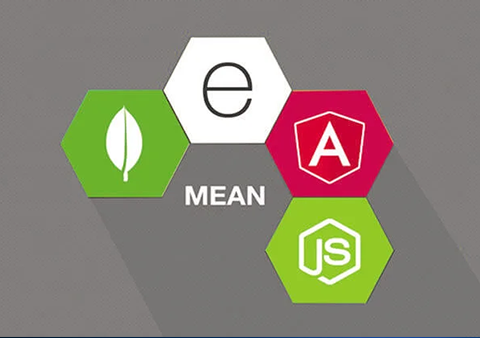Tricky Talks (or TWS Blog)
Explore the Latest Trends, Tips, and Tutorials in IT and Tech
How to Build a Responsive Website From Scratch
- Posted By: trickywebsolutions
-
 July 10, 2025
July 10, 2025

Mobile technology is revolutionizing the manner in which humans engage with the world. With nearly everyone using a smartphone, human beings are constantly tapping into information on their mobile phones. The excessive use of mobile phones has already surpassed desktop users. Most people access websites through their phones as it is a portable option that allows people to access information from anywhere anytime, therefore optimizing your site for mobile devices also is the key to success. So, how to build a responsive website? We have created this responsive web design tutorial to help you create a website from scratch.
What is Responsive Web Design?
Responsive web design is the process of designing websites in such a way that they look good on all screen sizes. Regardless of whether it is a laptop display, tablet display, or smartphone display, aside from the OS which is in use and the browser on which the specific website is viewed, the site must be working in all situations.
Why Responsive Web Design is Important?
Each company, irrespective of their size, wants websites that function properly and are responsive to all platforms and devices. For providing their customers and users with a seamless experience, companies want sites that are good-looking as well as responsive to different screen sizes.
Now, web developers need to create a responsive website on every platform. Therefore, web developers are primarily concerned with the way to create a responsive website that will function effectively on multiple platforms. Additionally, by optimizing your site and making it responsive you can rank high on search engines since Google gives preference to sites based on their mobile friendliness.
Benefits of Responsive Website Designs
Today, responsive web design is no longer optional; it has become a must for all web developers to build a responsive website. There are several benefits of responsive web design few of which we have listed below:
Seamless User Experience
A responsive website offers a smooth user experience as end users can easily navigate through your site, view content easily regardless of any resolution and screen size.
Increased Mobile Traffic
Reaches the increasingly large audience surfing the web on mobile devices and tablets, now accounting for more than half of all web traffic.
Better SEO Performance
Google favors websites that are more friendly to mobiles; thus, if your website is responsive, it helps your site to rank high on search engines.
Faster Load Times
Optimizing your websites minimize the loading time and load your website faster so users can spend most of their time on your website leading to reduced bounce rates.
Cost and Maintenance Efficiency
Making your website responsive eliminates the requirement of building different builds for multiple devices. You don’t have to make copies for mobile devices and laptops separately, saving the cost, time while reducing the use of resources.
Built for the Future
Responsive websites are flexible and can adjust with any latest devices and different screen sizes with lasting usability.
How to Build a Responsive Website?
We have curated this section to provide you with a customized responsive web design tutorial so you can build your own responsive website from the very start. To create a website from scratch, you will be required to follow the given steps:
1. Define Your Website Goals
Before you begin coding, make sure you define what things you want to integrate into your website and understand your audience so that you can fashion your content accordingly.
Make sure to identify the following things before coding:
Goal of the website (informational, portfolio, ecommerce)?
Determine the audience target and the device upon which you desire your site to be viewed.
Main pages or sections you need (e.g., homepage, about page, contact page)?
2. Go with Mobile-First Approach
Start by creating designs for smaller screens and then go for large screens as it helps your content and functionality adapt with different devices.
Benefits of using a mobile-first approach:
Prioritizes speed and usability
Reduces clutter
Ensures better performance on slower connections
3. Set Up the HTML Structure
Use semantic, clean HTML5 tags to provide structure for your content.
<header>
<nav>...</nav>
</header>
<main>
<section>...</section>
</main>
<footer>...</footer>
Keep your HTML modular and organized to easily style it later.
4. Style with CSS and Media Queries
CSS helps make your site responsive. Utilize relative units such as %, em, or rem to easily scale font sizes and layouts.
Next, use media queries to reformat the structure depending on the different screen sizes:
@media (max-width: 768px) {
/* Styles for tablets */
}
@media (max-width: 480px) {
/* Styles for smartphones */
}
Use Flexbox or CSS Grid to create responsive and adaptable layouts with minimal effort.
5. Use a Flexible Grid System
Begin by designing your site structure with a responsive grid that changes sizes on varying screen resolutions. You can take advantage of native responsive grids provided by CSS frameworks to simplify things.
You can also build your own using Flexbox:
.container {
display: flex;
flex-wrap: wrap;
}
This allows columns and rows to adjust according to various screen sizes.
6. Optimize Images and Media
If you use large images which are not optimized, it can slow down your website. A few ways to optimize include:
Use responsive images to make it compatible with different sizes based on the device.
Compress images using different tools.
Use max-width: 100% in CSS to make media scale with the screen.
Also, consider lazy loading to defer off-screen image loading.
7. Make Navigation User-Friendly
Navigation should be touch-friendly, especially on small screens:
Make buttons big enough to tap easily.
Don’t put clickable items too close together.
Headers that stick or floating action buttons can also make mobile more usable.
8. Test on Multiple Devices and Browsers
If your website is responsive but is not compatible it’s of no use. To check compatibility test your website on:
Multiple devices like phones, tablets, laptops
Various browsers like Chrome, Safari, Firefox, Edge
This makes sure your website is consistent across all devices and platforms
9. Improve Speed and Performance
Speed is a major element for both user experience and SEO. Consider implementing following key tips to optimize your speed:
Use a Content Delivery Network to serve files quickly worldwide
Use caching to minimize load times when user repeat visits
Utilize lazy load images and videos for faster page rendering
10. Deploy and Monitor Your Site
After doing all this and your site turns responsive and optimized:
Host it on a trusted platform
Install Google Analytics to monitor performance
Submit your website to Google Search Console to track visibility and fix any indexing issues
Gather feedback and continually enhance the site’s experience
Conclusion
At first glance, the idea to create a website from scratch may look difficult, but if you stick to the steps that we outlined in our How to Build a Responsive Website tutorial, you can build a site that not only appears nice but also loads fast on any device.











